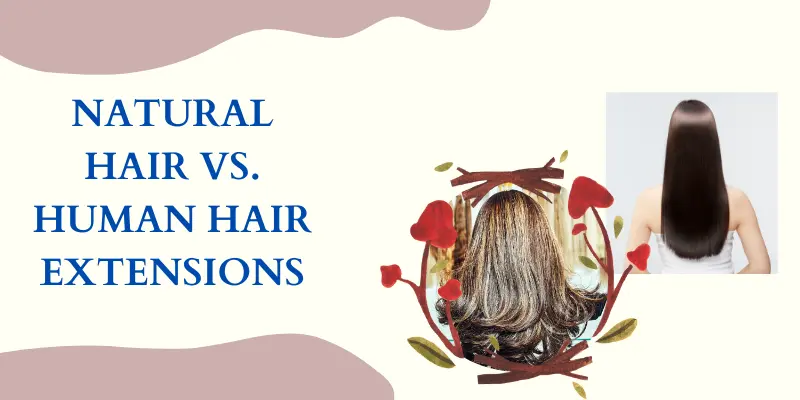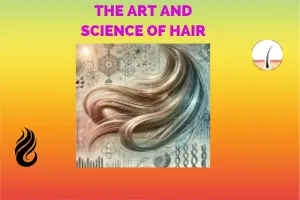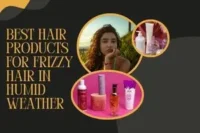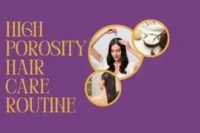What is Hair? Differences between Natural Hair and Human Hair
Published: 13 Oct 2024
Are you stepping into the beauty industry or a seasoned stylist looking to deepen your knowledge? Understanding the differences between natural hair and human hair extensions is essential for styling, hair health, longevity, and client satisfaction. Whether you’re styling your hair or advising others, this complete guide will help you understand hair’s structure, uses, care needs, and how to choose the best option for different lifestyles. We’ll also clear up myths, offer real-life insights, and break down the core question: What is hair? Let’s dive in.
What is Hair?
Hair is a thread-like structure made of a strong protein called keratin. It grows from follicles embedded deep in the skin’s dermis.
Though found mainly in mammals, hair plays a unique role for humans- beyond insulation, it’s a symbol of identity, beauty, and personal style.
Hair Structure: Understanding the Foundation
Healthy hair, whether natural or extended, starts with understanding its core layers:
The Cuticle
The outermost layer acts like a shield that protects the inner structure of your hair. Understanding hair structure is essential because the cuticle layer determines how well your hair retains moisture, resists damage, and maintains shine.
The Cortex
This layer holds the pigment (color) and gives hair its strength and elasticity.
The Medulla
The innermost part. Sometimes hollow, it varies based on hair type and thickness.
Knowing how these layers work helps you choose better treatments, products, and care methods.
Natural Hair: Embracing What You’re Born With
Natural hair is untouched by chemicals- no relaxers, dyes, or perms. It stays true to your natural texture, whether it’s wavy, curly, coily, or kinky.
Key Traits of Natural Hair
- Texture diversity: From silky straight to tightly coiled.
- No chemical alteration: Preserves the hair’s raw pattern and feel.
- Needs extra care: Prone to dryness and breakage without proper products.
Benefits of Natural Hair
- Healthier strands: No chemical damage.
- Saves money: No costly salon treatments.
- More style freedom: From afros to twist-outs, the options are endless.
My Story: As someone who returned to my natural coils after years of relaxing, I remember how fragile my strands felt at first. But after learning about moisture layering (leave-in, oil, cream), my curls came back to life- bouncy, soft, and full of personality.
Human Hair Extensions: Boosting Volume and Confidence
Human hair extensions are made from real, donated hair. They’re used to add volume, length, or even color without permanently altering your natural hair. Unlike synthetic options, human hair wigs and extensions offer a more natural look, better styling versatility, and longer durability.
Features of Human Hair Extensions
- Feels real: Silky, smooth, and easy to blend with natural hair.
- Customizable: Can be dyed, curled, or heat-styled.
- Variety: Available in multiple lengths, patterns, and shades.
Benefits of Human Hair Extensions
- Natural appearance: Looks and behaves like your own hair.
- Durable: With care, they last for months.
- Styling flexibility: Try new looks without commitment.
Client Experience: A client of mine had thinning hair due to stress. She wanted volume for her wedding but didn’t want a drastic cut or color. Human hair extensions gave her the dreamy, voluminous updo she always pictured- no regrets, just compliments.
Natural Hair vs. Human Hair Extensions
Let’s break down the key differences between natural hair and human hair extensions:

Maintenance
- Natural Hair: Requires regular deep conditioning and moisture retention.
- Extensions: Need careful detangling, gentle washing, and storage.
Cost
- Natural Hair: Lower cost but long-term upkeep.
- Extensions: Higher initial cost but instant volume and length.
Styling Freedom
- Natural Hair: Takes time and patience.
- Extensions: Instant transformation- great for quick events or changes.
Factors to Consider Before Choosing
When deciding between natural hair and human hair extensions, ask yourself:
- Do you prefer low-maintenance or high-glam looks?
- Is your schedule flexible for detailed hair care routines?
- Are you ready to invest in long-term styling options?
Pro Tip: If you hit the gym often or love swimming, natural styles might be easier to maintain. But for special occasions or short-term changes, extensions work magic.
Making the Right Choice for Your Hair Type
There’s no “better” option- just what suits your lifestyle, hair goals, and budget. But whether you rock natural hair or extensions, here are must-follow care tips:
For Natural Hair
- Use sulfate-free shampoos.
- Moisturize daily.
- Protect your hair at night with silk or satin.
- Trim regularly to avoid split ends.
For Human Hair Extensions
- Wash every 1-2 weeks with gentle products.
- Detangle carefully from ends to roots.
- Store in breathable bags when not in use.
- Avoid wearing too long hair- give your scalp breaks.
Conclusion: Celebrate Your Hair, Naturally or Enhanced
Whether you’re embracing your natural texture or enhancing your look with human hair extensions, your hair is a crown you wear daily. Know its structure, understand its needs, and honor its uniqueness. What matters most is hair health and choosing what works best for you.
This article is designed for readers aged 18 to 45 who want practical advice, professional tips, and real-world insights to guide their hair journey. From stylists to students, and beauty lovers to entrepreneurs, your needs are covered.
Frequently Asked Questions
The best way to moisturize natural hair is by layering hydration and sealing it in. Start with water-based leave-in conditioners or sprays to give your hair the moisture it craves. Use sulfate-free shampoos and deep conditioners regularly to prevent dryness. Finally, seal the moisture with natural oils like coconut, argan, or jojoba to keep hair soft and manageable.
Human hair extensions should be washed every 1–2 weeks, depending on how often you wear and style them. Always use gentle, sulfate-free shampoos and conditioners to avoid stripping the strands of their natural oils. Be sure to detangle before washing and avoid scrubbing roughly to prevent tangling. Keeping them clean ensures they last longer and stay soft.
Yes, human hair extensions can be dyed just like your natural hair because they’re made from real human hair. However, frequent coloring can dry them out, so it’s best to keep dyeing minimum. For best results, consult a professional colorist who knows how to treat extensions properly. This will help you avoid uneven color and unnecessary damage.
The safest way is to detangle when your hair is damp and has conditioner or a detangling spray applied. Use a wide-tooth comb or your fingers, starting from the ends and working upward to prevent breakage. Take your time and work in small sections for the best results. This reduces stress on your strands and keeps them strong.
Extensions themselves are not harmful, but poor installation and removal can damage natural hair. If applied too tightly, they can cause tension, breakage, or even traction alopecia. Always go to a trained stylist who understands protective methods. Also, avoid keeping extensions in for too long to let your natural hair rest.
Frizz is usually caused by dryness and a lack of moisture retention. To prevent it, keep your hair well-moisturized and sealed with natural oils or butters. Sleep with a satin bonnet or on a silk pillowcase to avoid friction from cotton fabrics. Protective hairstyles can also help reduce frizz and lock in hydration.
Protective styles are hairstyles that shield your ends and reduce daily manipulation. Popular options include braids, twist-outs, wigs, cornrows, and buns. These styles help minimize breakage while giving your natural hair a chance to grow and thrive. Just make sure they’re not too tight and don’t leave them in for too long.
Yes, you can swim with extensions, but it’s important to protect them first. Wet your hair with clean water before swimming so it absorbs less chlorine or salt. Apply a leave-in conditioner or protective spray to shield the strands. After swimming, rinse immediately with fresh water and follow with a gentle wash.
Co-washing is washing your hair with conditioner instead of shampoo to maintain moisture. It’s especially good for curly and natural hair, which tends to dry out easily. However, co-washing alone can lead to product buildup, so you should still shampoo occasionally. Using a cleansing conditioner designed for co-washing is the safest approach.
First, make sure the extensions are completely clean, detangled, and fully dry to prevent mold or tangling. Store them in a breathable bag, silk pouch, or their original packaging. Keep them in a cool, dry place away from sunlight and heat. Proper storage helps maintain their quality and ensures they last longer.

- Be Respectful
- Stay Relevant
- Stay Positive
- True Feedback
- Encourage Discussion
- Avoid Spamming
- No Fake News
- Don't Copy-Paste
- No Personal Attacks



- Be Respectful
- Stay Relevant
- Stay Positive
- True Feedback
- Encourage Discussion
- Avoid Spamming
- No Fake News
- Don't Copy-Paste
- No Personal Attacks





